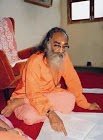Vedantasara-19.
V. THE STEPS TO SELF-REALIZATION:
181. Till such realization of the Consciousness which is one’s own Self, it is necessary to practise hearing, reflection, meditation and absorption (Samadhi). Therefore these are also being explained.
182. Hearing is the ascertainment through the six characteristic signs that the entire Vedanta philosophy establishes the one Brahman without a second.
183. the characteristic signs are: the beginning and the conclusion, repetition, originality, result, eulogy and demonstration.
184. Thus it has been said: “In ascertaining the meaning, the characteristic signs are – the beginning and the conclusion, repetition, originality, result, eulogy and demonstration.”
185. The beginning and the conclusion mean the presentation of the subject-matter of a section at its beginning and end. As, for instance, in the sixth chapter of the Chandogya Upanishad, Brahman, the One without a second, which is the subject-matter of the chapter, is introduced at the beginning in the words, “One only without a second” etc., (VI-2-1), and again at the end in the words, “In It, all that exists has its Self etc., (Vi-8-7).
186. Repetition is the frequent presentation of the subject-matter in the section. As, for instance, in the same section, Brahman, the One without a second, is repeated nine times in the sentence, “Thou art That”.
187. Originality means that the subject-matter of a section is not available through any other source of knowledge. As, for instance, in that very section, Brahman, the One without a second, is not knowable through any other means except the Srutis.
188. The result is the utility of the subject-matter of a section – e.g., Self-knowledge – or its practice as mentioned at different places. As, for instance, in the same section, the words, “The man who has got a teacher knows the Brahman. He has to wait only till he is delivered from the body; then he becomes united with Brahman” (VI-14-2). Here the utility of the knowledge of Brahman, the One without a second, is Its attainment.
189. Eulogy is the praising of the subject-matter of the section at different places. As, for instance, in the same section the words, "Have you ever asked for that instruction by which one hears what has not been heard, one thinks what has not been thought, one knows what has not been known” (Vi-1-3), have been spoken in praise of Brahman, the One without a second.
190. Demonstration is the reasoning in support of the subject-matter of a section adduced at different places. As, for instance, in the section in question, the words, “My dear, as by one lump of clay all that is made of clay is known – every modification being but an effort of speech, a name and the clay, the only reality about it” (VI-1-4), furnish the argument that modifications are merely an effort of speech, to establish Brahman, the One without a second.
Continues...




Comments